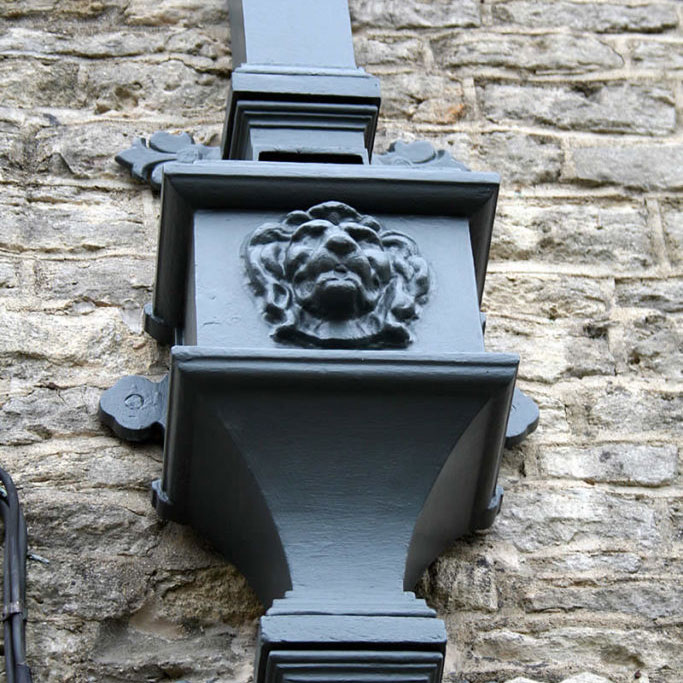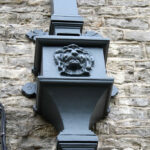Gutters, rhones, and downpipes play a critical role in directing rainwater away from your home’s foundation, protecting it from water damage and erosion. Proper maintenance of these components is essential to ensure they function effectively and last for years. In this blog, we’ll cover the best practices for maintaining and preventing damage to your gutters, rhones, and downpipes.
Regular Cleaning
Why It’s Important:
Clogged gutters and downpipes can lead to water overflow, causing damage to your roof, walls, and foundation. Regular cleaning helps prevent blockages and ensures proper water flow.
How to Do It:
- Frequency: Clean your gutters and downpipes at least twice a year—once in the spring and once in the fall. If you have overhanging trees, consider cleaning them more frequently.
- Tools: Use a ladder, gloves, a small trowel or scoop, and a bucket. For high or difficult-to-reach areas, consider using a telescoping gutter cleaning tool or hire a professional.
- Procedure: Remove leaves, twigs, and other debris from the gutters. Ensure the downpipes are clear by checking for any obstructions. Rinse the gutters with water from a garden hose to flush out remaining debris.
Inspect for Damage
Why It’s Important:
Regular inspections help identify early signs of damage, allowing you to address issues before they become major problems.
How to Do It:
- Visual Check: Look for sagging gutters, rust spots, and cracks in the rhones and downpipes. Check for signs of water damage on your home’s exterior or near the foundation.
- Gutter Levels: Ensure that gutters are properly aligned and not sagging. Water should flow smoothly towards the downpipes without pooling.
- Downpipe Function: Test downpipes by running water through them to ensure they’re clear and functioning correctly. Check for leaks or loose connections.
Ensure Proper Installation
Why It’s Important:
Proper installation of gutters, rhones, and downpipes ensures optimal performance and prevents issues like water damage and overflow.
How to Do It:
- Professional Installation: If you’re installing new gutters or replacing old ones, hire a professional with experience in gutter installation. They can ensure that the system is correctly installed with proper slopes and connections.
- Quality Materials: Use high-quality materials that are durable and suited to your local climate. For instance, aluminum or copper gutters are resistant to rust and can withstand harsh weather conditions.
Prevent Ice Dams and Winter Damage
Why It’s Important:
Ice dams can form in cold climates, causing water to back up and potentially leak into your home. Preventing ice dams is crucial to maintaining the integrity of your gutters and downpipes.
How to Do It:
- Insulation: Properly insulate your attic to prevent heat from escaping and melting snow on the roof.
- Roof Rake: Use a roof rake to remove excess snow from the roof, especially near the eaves.
- Gutter Heat Cables: Install heat cables in the gutters and downpipes to prevent ice buildup. These cables can help keep the gutters clear during winter months.
Check and Maintain Downpipe Connections
Why It’s Important:
Downpipes are crucial for directing water away from your home’s foundation. Loose or damaged connections can lead to leaks and erosion.
How to Do It:
- Secure Connections: Ensure that downpipe sections are securely connected and not leaking. Tighten any loose connections or replace damaged parts.
- Install Extensions: If water is splashing against the foundation, consider installing downpipe extensions or splash guards to direct water further away from the home.
Install Gutter Guards
Why It’s Important:
Gutter guards can help prevent debris from entering the gutters, reducing the frequency of cleanings and minimizing the risk of clogs.
How to Do It:
- Types: Choose from various types of gutter guards, including mesh screens, foam inserts, or solid covers. Each type offers different benefits and levels of protection.
- Installation: Install gutter guards according to the manufacturer’s instructions. If you’re unsure, consult a professional to ensure proper installation.
Address Overhanging Trees
Why It’s Important:
Overhanging branches can drop leaves and debris into your gutters, leading to clogs and potential damage.
How to Do It:
- Trimming: Regularly trim overhanging branches to prevent debris from falling into the gutters. Maintain a safe distance between branches and the roof.
- Consult an Arborist: If you have large or difficult-to-trim trees, consider consulting a professional arborist for assistance.
Repair Leaks and Cracks Promptly
Why It’s Important:
Leaks and cracks in gutters, rhones, and downpipes can lead to water damage and erosion if not addressed quickly.
How to Do It:
- Seal Cracks: Use a high-quality gutter sealant to repair small cracks and holes. Clean the area before applying the sealant to ensure a strong bond.
- Replace Damaged Sections: For extensive damage or large holes, it may be necessary to replace sections of the gutter or downpipe. Consult a professional for guidance on the best course of action.
Maintaining and preventing damage to your gutters, rhones, and downpipes is essential for protecting your home from water damage and ensuring the longevity of your roofing system. Regular cleaning, inspections, and timely repairs can prevent minor issues from becoming major problems. By following these tips and taking proactive measures, you can keep your gutter system in top shape and safeguard your home from potential water-related issues.




